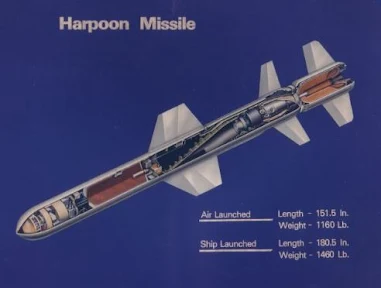The White House is currently considering sending anti-ship missiles to Ukraine. This is related to the efforts of the United States and NATO to remove the blockade of Ukrainian seaports from Russia's Black Sea Fleet.
As is well known, Ukraine is currently unable to ship agricultural products, especially wheat, abroad. About 20 Russian warships, including submarines, are in the Black Sea operational zone.
Quoted from reuters.com (20/5/2022), it is stated that there are two anti-ship missile options that the White House is studying for Ukraine. The first is Boeing's Harpoon missile, and the second option is Kongsberg and Raytheon Technologies' NSM (Naval Strike Missile) missile.
But it should be noted that the anti-ship missile solution for Ukraine must be in a coastal defense platform, aka anti-ship missiles launched from the mainland (coastal area). Because Ukraine no longer has naval power (warships), the solution to the Russian naval blockade must be anti-ship missiles launched from the coast.
Apart from technical matters, US officials are currently calculating the various risks associated with shipping anti-ship missiles. Things to think about are the lengthy training requirements, difficulties in maintaining equipment, to the concern that US weapons could be captured by Russian troops. There is another political factor which is quite frightening, that the delivery of these missiles could escalate with Russia.
 |
| Blockade of the Russian Black Sea Fleet on the Ukrainian coast. |
In April, Ukrainian President Volodymyr Zelenskiy appealed to Portugal to provide the Ukrainian military with Harpoon missiles, which have a range of up to nearly 300 km. Despite the US approval, there are several problems that prevent Ukraine from receiving these missiles. First, the limited availability of platforms for launching Harpoons from the coast – a technically challenging solution according to some officials – as most are sea-based missiles.
There were proposals from two officials at the Pentagon who said the United States was working on a potential solution that would pull launchers from US ships ashore. Both Harpoon and NSM missiles, have a price of around US $ 1.5 million per unit.
Bryan Clark, a defense analyst with the Hudson Institute, said 12 to 24 anti-ship missiles like the Harpoon with a range of more than 100km would be enough to threaten Russian ships and could convince Moscow to lift the blockade.
"If Putin stays put, Ukraine could shoot Russia's biggest ship, because they have nowhere to hide in the Black Sea," Clark said. So far, the Russian Navy has suffered heavy losses with the sinking of the Black Sea Fleet's flagship missile cruiser, RTS Moskva, due to an antique missile attack on the RK-360MC Neptune.
"Several countries have been willing to send Harpoons to Ukraine," the US official and congressional source said. But no one wants to be the first or only country to do so, as they fear retaliation from Russia if a ship is sunk with a Harpoon than they sent, US officials said.
The US official said one country was considering being the first to supply missiles to Ukraine. Once the country commits to sending the Harpoon, other countries may follow suit, the official said.
The NSM missile, which can be launched from the coast and has a range of 250 km, and a personnel training time of less than 14 days, is considered ideal for Ukraine. The NSM is more logistically available than the Harpoon, plus NATO allies can loan available mobile ground launchers, and warheads from Norway.
 |
| Harpoon missile anatomy |
Sources in the US congress said another option was for Norway to donate NSM to Ukraine, an idea supported by Norwegian lawmakers. However, the Norwegian Ministry of Defense declined to comment on what additional contributions of weapons and defense equipment it might consider offering to Ukraine.
All shipments of weapons that have components sourced from US companies, including NSM from Norway, must be approved by the US Department of Defense.
While the NSM is already available in a coastal defense version, the Harpoon coaste defense version is still in production. Referring to 2021, the US decided to continue production of the Harpoon Coastal Defense System (HCDS) for Taiwan with a Harpoon Block II base which has a range of up to 125 Km.
More precisely, in October 2021, the United States and the Republic of China (Taiwan) signed a contract for the supply of 100 HCDS launchers, 25 fire control vehicles, and 400 Harpoon Block II anti-ship missiles. The contract is worth US$220 million, and delivery is complete by July 2023.
In March 2022, the US and Taiwan signed another contract for the supply of 100 HCDS launchers, 25 fire control systems worth US$498 million. Under this agreement, deliveries must be completed by December 2028.
Overall, over the next 6 years, 200 HCDS launchers, 50 fire control vehicles and at least 400 Harpoon Block II anti-ship missiles are planned to be produced at once. If Harpoon is selected for Ukraine, it is possible that the stock produced by Harpoon for Taiwan will be 'transferred' to Ukraine.
Follow Daily Post on Google News to update information quickly. Thank you for visiting our website..!! Don't forget to share any information to help develop our website..



